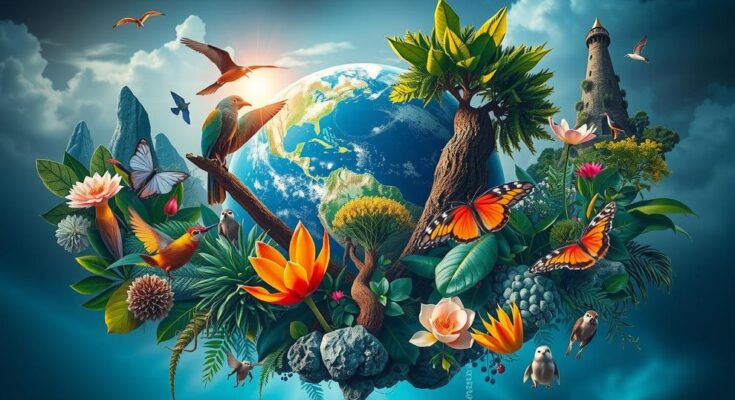Papua New Guinea’s rainforest covers 73 million hectares and is home to 7% of the world’s species, with a significant number endemic. It features remarkable bird species, including the national bird, the Kumul, and faces threats from deforestation and climate change. Conservation efforts and community involvement are essential for protecting this biodiversity, as education plays a key role in raising awareness of these challenges.
Papua New Guinea (PNG) boasts a rainforest spanning 73 million hectares, encompassing a variety of ecosystems including tropical forests, mountainous regions, and coastlines. Covering merely 1% of the Earth’s surface, this rainforest ranks as the world’s third-largest, following the Amazon and the Congo. PNG is a megadiverse country, housing around 7% of global species, many of which are endemic, including a significant variety of flora and fauna.
The rainforests of New Guinea are home to approximately 4,642 vertebrate species, representing nearly 8% of all world vertebrates. The diverse array of habitats contributes to the country’s remarkable bird population, with over 779 bird species recorded, including 108 endemic species. Birds are integral to PNG’s cultural heritage, influencing customs and traditions, exemplified by the national bird, the Kumul, celebrated for its striking plumage.
Among the notable avian species is the Hooded Pitohui, recognized as the first toxic bird known to science, containing a lethal neurotoxin. Additionally, water birds such as herons play critical roles in the ecosystems of PNG, contributing to the balance of aquatic life. These coastal habitats also support migratory birds, further enriching the biodiversity of the region.
Unfortunately, these remarkable ecosystems face stiff challenges from deforestation, climate change, and resource exploitation. The International Union for Conservation of Nature (IUCN) indicates that 4,315 animal species in PNG are threatened. To combat these issues, conservation efforts must involve comprehensive strategies including legislation, community-led initiatives, and environmental education to safeguard biodiversity.
Integrating Indigenous knowledge in conservation practices presents an opportunity to enhance efforts aimed at preserving PNG’s unique biodiversity. Educational programs are essential in raising awareness concerning the ecological significance of these species and habitats. The column aspires to enlighten readers about this biodiversity and foster appreciation for its preservation, vital for PNG’s cultural and ecological future.
In summary, Papua New Guinea is a megadiverse nation vital to global biodiversity, featuring expansive rainforests rich in unique species. Although it faces threats from human activity and climate change, combined efforts in conservation and community engagement can help safeguard its ecological treasures. Understanding and educating about this diversity is crucial for preserving PNG’s natural heritage and cultural identity.
Original Source: www.postcourier.com.pg




